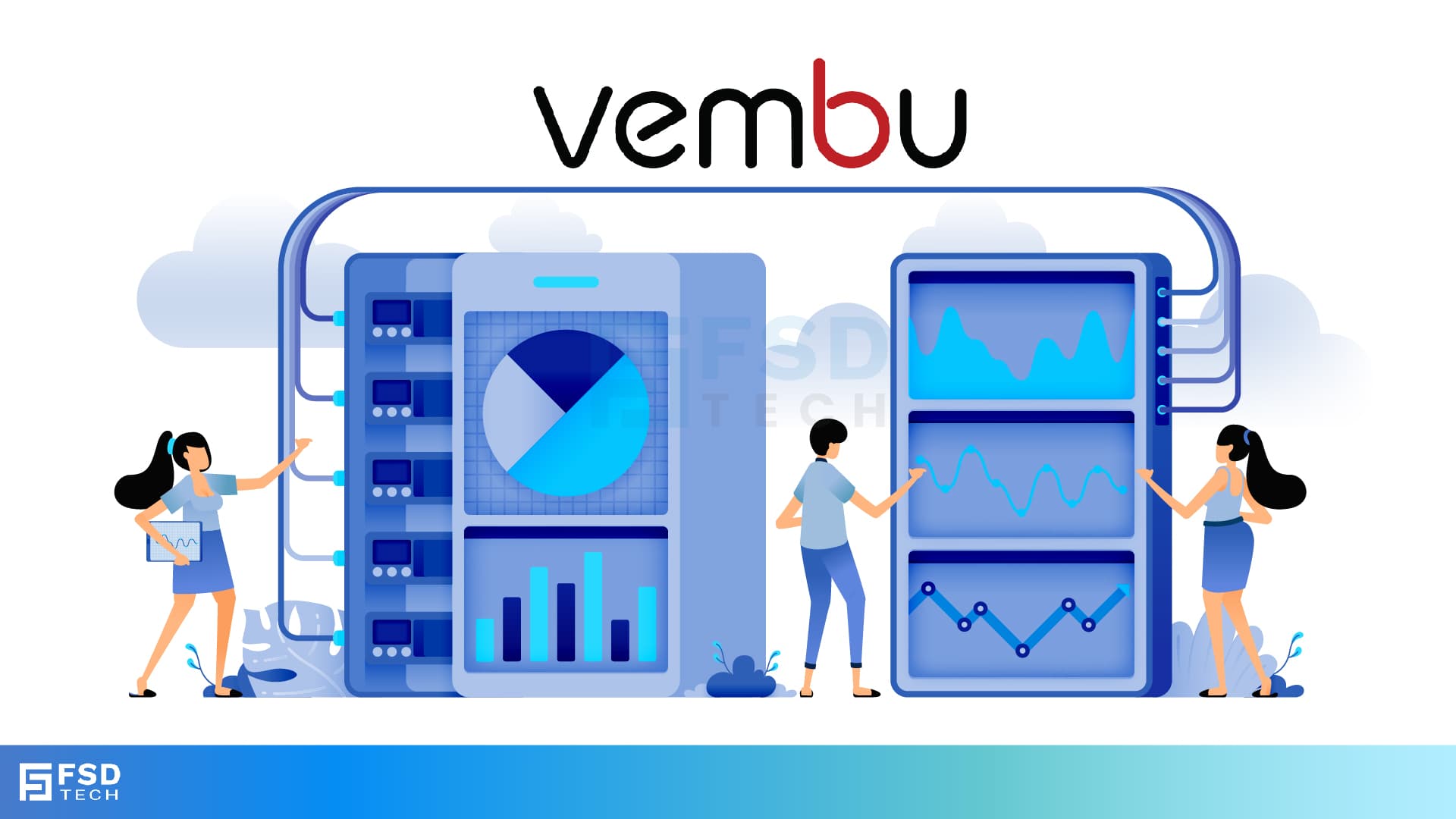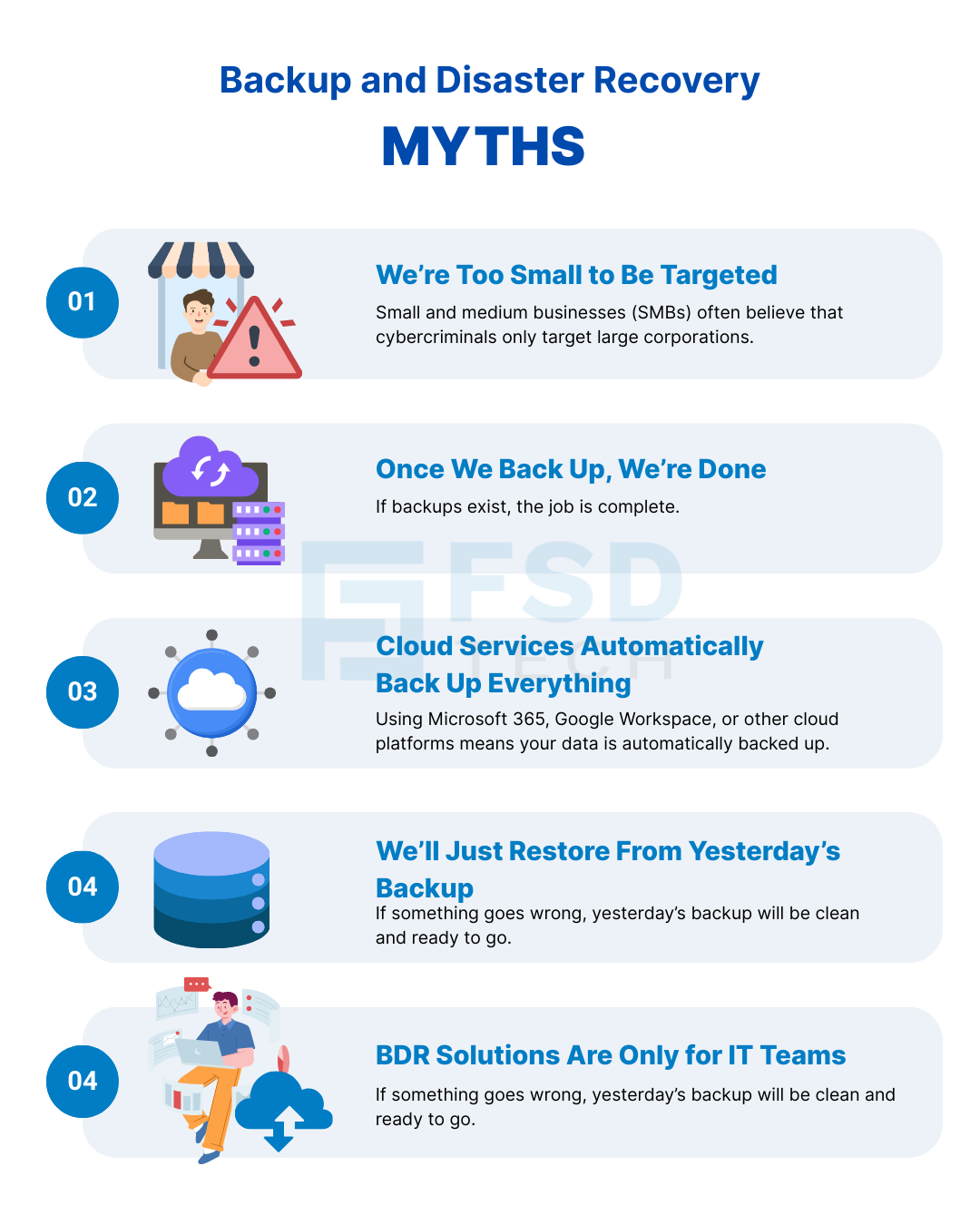
Inside Cato’s SASE Architecture: A Blueprint for Modern Security
🕓 January 26, 2025

It was the end of the financial quarter at a mid-sized Retail Chain in Nairobi. The finance head, Samuel, was proud of how smoothly things had been running.
“We have backups, so we’re safe,” he told the team confidently. But, On a Thursday afternoon, their main server crashed due to a hardware failure. The IT team moved quickly to restore the backup — only to discover that the last usable backup was from two months ago.
Two months of invoices, receipts, payroll data, supplier records, and inventory updates were gone. The financial fallout was huge, but the reputational damage was even worse — angry suppliers and customers lost trust overnight.
Why did this happen?
Because Samuel’s company believed myths about backup and disaster recovery (BDR) that are still widespread in GCC and African businesses today.
The Myth: Small and medium businesses (SMBs) often believe that cybercriminals only target large corporations.
The Reality: Cybercriminals don’t care about your size. In fact, smaller businesses are often more attractive because they tend to have weaker defenses, no dedicated cybersecurity team, and outdated systems. With ransomware now sold “as a service” on the dark web, attackers can cheaply automate mass campaigns and hit hundreds of SMBs at once.
Stats to Note:
Example: A two-person accounting firm in Dubai lost every client file during tax season after a ransomware attack. They weren’t targeted because they were a “big fish” — they were targeted because their defences were minimal.
The Myth: If backups exist, the job is complete.
The Reality: A backup is only as good as its ability to be restored quickly and accurately. Without regular testing and verification, you may have a false sense of security. Corrupted files, incomplete copies, or misconfigured backup jobs can leave you stranded when you need them most.
Stats to Note:
Example: A logistics company in Lagos backed up daily — or so they thought. When a server outage hit, recovery attempts failed because the backup software hadn’t been configured properly after a system upgrade. They spent 17 days manually rebuilding lost data, delaying deliveries and losing multiple contracts.
✅ Test Your Backups Today: Make sure they actually work when it matters. Schedule a Backup Verification Demo
.
The Myth: Using Microsoft 365, Google Workspace, or other cloud platforms means your data is automatically backed up.
The Reality: Most cloud providers operate under a Shared Responsibility Model — they ensure service availability, but you are responsible for your own data protection. Deleted files, ransomware-encrypted content, or malicious insider actions are not covered by standard retention policies.
Stats to Note:
Example: An Abu Dhabi sales team lost a year’s worth of proposals when an employee accidentally deleted a shared drive. They assumed it could be restored from the cloud, but the retention period had expired.
The Myth: If something goes wrong, yesterday’s backup will be clean and ready to go.
The Reality: Ransomware and data corruption don’t always show immediate symptoms. Malicious code can sit dormant for days or weeks, meaning yesterday’s backup could already be compromised. Without versioned backups and historical restore points, you risk restoring the same problem over and over.
Example: A manufacturing plant in Oman backed up CAD files daily. Unbeknownst to them, a corrupt file had been introduced into the design repository and was being backed up for 28 consecutive days. Every restoration attempt reintroduced the same corrupted file, halting production for weeks.
🚀 Ready to Bust These Myths in Your Business? Get Started with Vembu BDR Suite Today.
The Myth: Backup and disaster recovery are purely technical matters for the IT department to handle.
The Reality: BDR is a business survival strategy. RPO (Recovery Point Objective) and RTO (Recovery Time Objective) are financial and operational KPIs that executives, finance managers, and even procurement officers must understand. Decisions about backup frequency, storage location, and recovery speed affect every department’s ability to function during a crisis.
Example: A hotel group in Kenya had a full backup solution in place — but the procurement team switched to a cheaper storage plan without understanding it didn’t meet the required RTO for guest management systems. A subsequent outage took 14 hours to recover from, during which dozens of reservations were lost.
| Myth | Vembu’s Solution |
|---|---|
| SMBs aren’t targeted | Same enterprise-grade protection for SMBs and large corporations |
| Backup is “set and forget” | Automated backup verification ensures recoverability |
| Cloud services back up everything | Full back-up coverage for Microsoft 365, Google Workspace, and SaaS apps |
| Yesterday’s backup is always clean | Versioned backups allow restores from a point before infection |
| BDR is only for IT | Simple dashboards and reports accessible to non-technical staff |
Believing these myths can leave your business dangerously exposed. Backup and disaster recovery are not one-time projects — they are ongoing commitments that need regular review, testing, and adjustment.
A reliable solution like Vembu BDR Suite not only addresses these risks but also empowers your entire organization to make informed decisions about data protection.
Don’t let myths decide your fate. Request a free backup health check today to see if your current setup can truly deliver when you need it most. Book your check now

Yes — in fact, they are often more at risk than large corporations. Attackers know smaller businesses usually have fewer IT resources, lower budgets for security, and less frequent audits. According to industry reports, 43% of cyberattacks target SMBs, and the majority are financially motivated. Automated ransomware campaigns don’t care about company size — they hit whoever is vulnerable.
Because a backup is only useful if it can be restored quickly and accurately. Files can be corrupted, incomplete, or saved in a format incompatible with your recovery systems. Without testing, you might discover too late that your “backup” is unusable. Industry data shows 77% of businesses have found unrecoverable files in their backups during testing.
Not in the way most businesses think. Cloud providers operate under a Shared Responsibility Model — they ensure platform uptime and some short-term retention, but you are responsible for protecting against accidental deletion, malicious actions, and ransomware. For example, Microsoft’s default deleted-item retention is 30 days. After that, the data is gone unless you have a separate backup system.
No. If your systems have been compromised for days or weeks, yesterday’s backup could already contain ransomware, corrupted files, or malicious code. Without versioned backups that let you roll back to a “clean” point in time, you risk reintroducing the same problem during recovery.
Because downtime and data loss impact the entire organization:
At least quarterly, but ideally monthly for mission-critical systems. You should also test after any major infrastructure change — such as a new application rollout, storage upgrade, or migration — to ensure backups are still valid.
Because cloud storage is not the same as backup. Cloud platforms are great for accessibility and redundancy, but they still suffer from accidental deletion, insider threats, and ransomware. A dedicated backup gives you control over retention policies, recovery points, and security measures.
Yes — if your backups are connected to your main network without protection, ransomware can encrypt or delete them. Solutions like Vembu BDR Suite use immutable storage and air-gapped backups so once data is written, it can’t be altered or erased by attackers.
Vembu maintains multiple recovery points and allows you to roll back to a clean version of your data from before the infection began. It also supports automated backup verification so you know your data is intact and recoverable.
10. Can Vembu back up Microsoft 365 and Google Workspace?
Yes. Vembu provides full backup and restore for:
Yes. Vembu offers a simple, centralized dashboard that non-technical staff can use to:
No. Vembu is designed to give SMBs enterprise-level protection at a price point that’s realistic for smaller budgets. The cost of implementing it is almost always lower than the cost of even one major data loss event.
Yes. Vembu supports physical servers, virtual machines, hybrid setups, and cloud workloads. This flexibility allows you to protect your entire IT environment under a single platform.
Believing that simply “having backups” is enough. The biggest failures come from:
Run a backup health check. This involves:

Nasmal is a Solution Architect & Business Analyst focused on AI, Data, Automation, BCP, and Process Optimization. He helps businesses evolve from reactive to proactive, data-driven, and resilient operations. With hands-on expertise, he simplifies complex tech into clear, easy-to-understand blogs.
Share it with friends!

🕓 November 24, 2025

🕓 September 16, 2025

🕓 September 5, 2025
share your thoughts